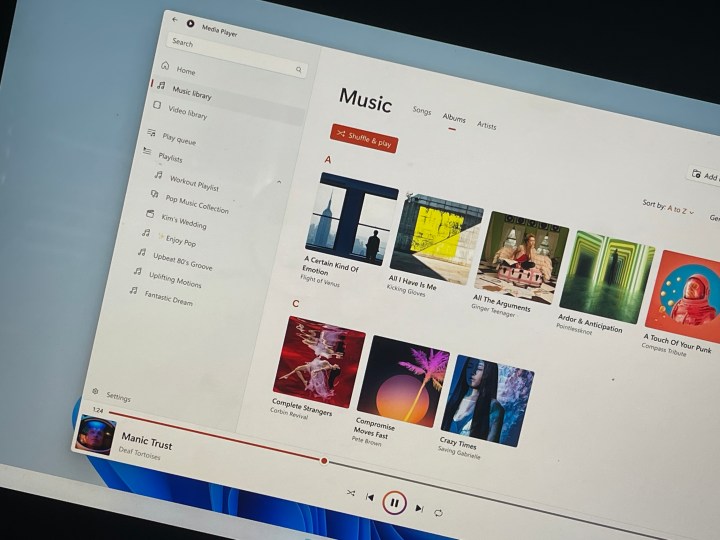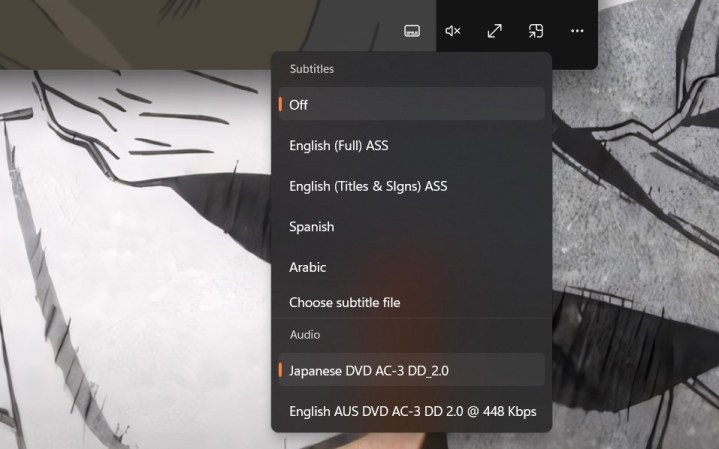
Microsoft has had a strange relationship with local video playback for the past several years. It’s one of those features that was caught in the purgatory that was created with the start of Windows 10, as Microsoft hung onto legacy apps like Windows Media Player while trying to push into a new, modern era. We’ve come a long way since that point, and Windows 11 is the closest to offering a full-featured video player that Microsoft has been in years.
Media Player, the app built into Windows 11 for video and audio playback, has come a long way in the two years since it was introduced. It’s surprisingly feature-rich for such a simple application. Even with updates and new additions to Media Player, though, it still falls short of free, open-source options because of two key issues.
The history

There’s some history here that’s important to address. Don’t confuse Media Player with Windows Media Player. They’re different apps. The latter is now known as Windows Media Player Legacy, and it’s the app you’re familiar with if you’ve ever interacted with Microsoft’s media player prior to Windows 11. It can make playlists, show videos, and rip your CDs. It hasn’t quite grown out of the Vista-era trimmings, but at this point, it really doesn’t need to.
The app Media Player we have today was built out of the leftovers of Groove Music. This was Microsoft’s music app, which Microsoft discontinued and rebranded under Media Player. Instead of just audio, Media Player supports video, as well. Some features, such as ripping CDs, weren’t available when the app launched a couple of years ago. Since then, Microsoft has rolled out the features of the legacy Windows Media Player, making Media Player your one-stop shop for audio and video.
I’d forgive you for thinking Media Player isn’t any good, though. Groove Music was infamous in Windows 10 and the early days of Windows 11, and I imagine most people ditched the built-in player and found a video/music app of their own. I certainly did with VLC Player. I was shocked how far Media Player has come since it was introduced two years ago, though.
It has a lot of features, and for most people, it has everything you need in a simple-to-understand format. It also looks great, which is a lot more than I can say for other video players. There are two critical issues that still hold it back, though.
What’s right

The biggest thing Media Player has going for it is that it’s easy to use. That usually means sacrificing features — we all know an app that looks like it was designed for Windows XP has more features, right? — but Media Player is surprisingly robust for playing videos. Out of the gate, you have support for just about every codec you could need, minus one critical omission that I’ll get to in the next section.
Compared to something like VLC, you have the main controls you’d want for playing video within easy reach. You can adjust the playback speed, tweak the audio with an equalizer, and crop in to avoid black bars. There are even some image settings, allowing you to change the brightness, contrast, and saturation. VLC certainly goes deeper with sharpening, an audio compressor, custom overlays, and so much more. But for the vast majority of videos you’ll play, Media Player has what you need.
There are two things that go beyond the basics with Media Player, though: subtitles and audio tracks, and casting. In the old Windows Media Player, you could add subtitles to videos that didn’t have them included, but it was a manual process that happened in the File Explorer. With the new Media Player, you can just add a file directly by pressing the Caption button within the app. It’s a small change, but it makes Media Player a lot easier to use.

Subtitles and audio tracks are very important for my local videos, too. I watch a lot of anime, and I’ll have to often resort to archived copies of older shows and movies due to some unfortunate stream of licensing disputes. It’s critical that I can easily adjust the subtitle and audio track that a file is using while playing a video, and Media Player makes that simple. That assumes you have the audio and subtitle tracks you need, and that they’re high quality, however. VLC still takes the cake if you need to sync things up.
Casting is a big addition, too. Media Player hooks into the casting features built into Windows 11, and it can stream your screen to any device that supports casting. The only downside here is that it streams your entire screen, so you’ll need to stop the casting after your video is done playing.
Two major problems

For most people, Media Player gets the job done for video. But there are two major issues with the app that invalidate its upsides.
First, HEVC. If you have a video that encoded with HEVC, or H.265, you have to buy a $1 add-on in the Microsoft Store to watch that video in Media Player. It’s not the cost of the add-on — I think most of us could spare $1 — but it’s a slap in the face to charge for such a widely-used codec in the first place. You’ll commonly find HEVC in video editing and capture applications, so you could easily record or edit a video and not be able to watch it in Media Player.
What’s more frustrating is that Microsoft offered HEVC support for free previously. In Windows 11 22H2, you could find a free download for HEVC codec from the Microsoft Store. That listing is now gone, and if you somehow manage to find it with a more recent version of Windows, the Microsoft Store will block you from installing it. There are ways to still get the free version — I’ll link this Reddit thread and let you take it from there — but you shouldn’t have to go through the hassle.
The charge, apparently, is due to licensing fees. I’m honestly not sure one way or the other, and I’m certainly no expert when it comes to patent licensing agreements. I do know that HEVC is supported in every major browser, including Edge, Chrome, and Safari, and that it’s been supported in hardware between CPUs and GPUs since 2015, however. That’s on top of that fact that Microsoft previously offered it for free.

The other major issue comes down to Media Player’s history. It was built out of an app created for music, and there are far more features focused there. For instance, you can grab metadata for your music online automatically through the app — you can’t do the same for video. You also have no way to find subtitles for videos through Media Player, unlike VLC and its VLSub extension that hooks into Opensubtitles.org directly from the app.
In both cases, the reason behind these lack of features comes down to money. Microsoft is one of the largest companies in the world, and there’s no doubt that external databases like Open Subtitles and licensing agencies would salivate at a cut of Microsoft’s pie considering the massive install base of Windows. That’s the cost of doing business, though, and clearly Microsoft thinks that cost isn’t justified.
Regardless of the reason, the fact remains that the Media Player app in Windows 11 falls short of a multitude of free options that have been available for decades. I use VLC for my purposes, but there are a ton of other options including Media Player Classic (MPC) and its variants, FFmpeg, and Pot Player.
Services Marketplace – Listings, Bookings & Reviews
